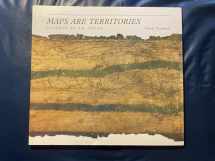
Maps are Territories: Science is an Atlas
Book details
Summary
Description
"The map is not the territory" is a cartographic truism. It means that unless the map is drawn on a mile-to-mile scale and has the same physical characteristics as the territory itself, it cannot be perfectly accurate. But as David Turnbull demonstrates, the map is a metaphor not only for the territory it represents but for the culture that created it. As such, it takes on the meaning of the territory and its importance in that culture.
In this ingenious book, Turnbull challenges common assumptions about the nature of cartography. In each of ten "exhibits" he addresses a seemingly basic concept—that a map is be factually accurate, for example, or that its symbols refer to concrete elements of the landscape—and then illustrates its complexities with maps from Western, Asian, and native cultures, from prehistoric to modern times, accompanied by quotations and historical background. The "exhibits" show how different cultures express their relation to the land, and how those differences ultimately define not only territory but also domination—religious, ideological, cultural, and political.
An ideal introduction to the concepts of cartography, this book teaches not only how to read maps, but how to read them between the lines.


We would LOVE it if you could help us and other readers by reviewing the book
Book review



